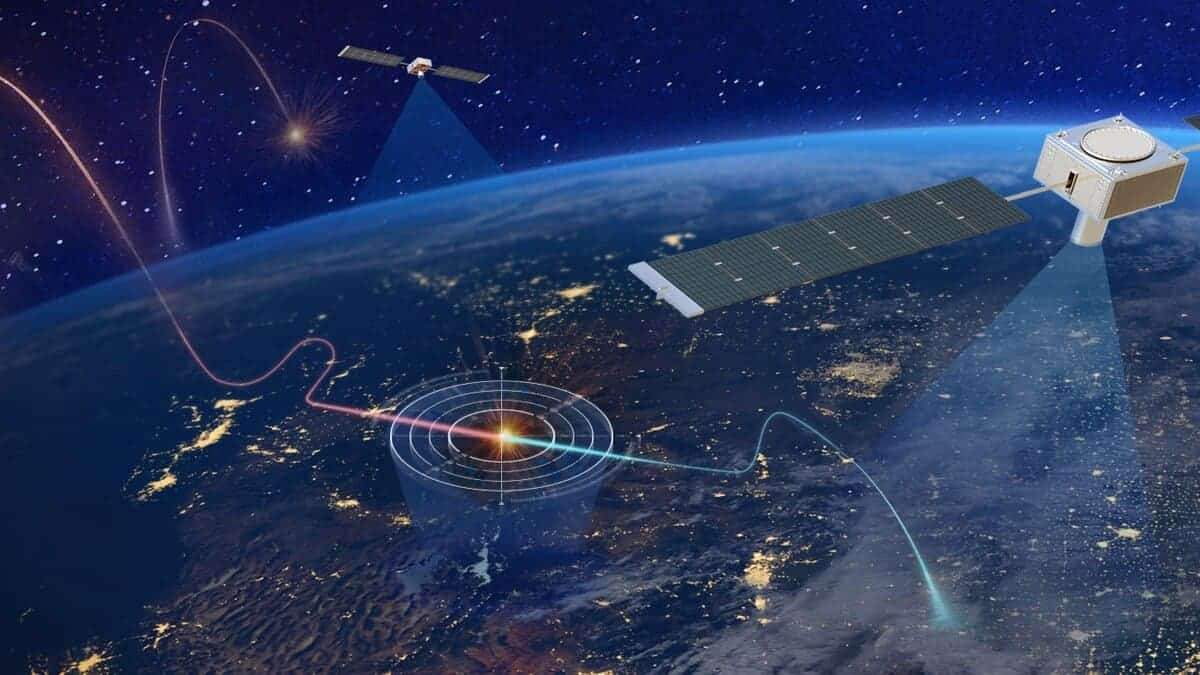Senate bill promises more funding for space-based hypersonic defense, but mum on details

An early version of the Senate’s annual defense bill would provide additional funding for space-based sensors capable of detecting and tracking hypersonic weapons, according to a summary released June 11. However, details on the proposal are scant.
Congress has become increasingly concerned over the threat posed by hypersonic weapons under development by China and Russia. Too dim to be reliably picked up by current space-based sensors and able to maneuver around terrestrial sensors, hypersonic weapons make much of the current missile warning system obsolete, as it was designed for ballistic missile threats.
To counter this threat, the Defense Department has proposed a solution: a proliferated constellation of satellites operating in low Earth orbit. Once a hypersonic threat is detected, the constellation tracks it while passing custody from satellite to satellite as the weapon moves around the globe.
This Hypersonic and Ballistic Tracking Space Sensor, or HBTSS, will be part of the new National Defense Space Architecture, a proliferated constellation that will eventually be made up of hundreds of small satellites operating primarily in low Earth orbit. The Space Development Agency is overseeing this effort and plans to begin placing its first satellites on orbit in fiscal 2022.
The Missile Defense Agency listed HBTSS as an unfunded priority during the prior budget cycle, and ultimately Congress did allocate $108 million to the agency for the program in FY20. Now the Senate Armed Services Committee says it will provide additional funding for the program for FY21, but it has yet to say by how much.
The summary also does not note where the funding for HBTSS will go. Determining which agency would be in charge of HBTSS was a source of friction between the Pentagon and Congress in 2019, with the latter pushing for MDA to take primary responsibility for the effort, while the White House claimed it was too early to put one agency in charge.
Ultimately, legislation passed by Congress in December directed MDA to be the lead agency for the development and deployment of HBTSS. However, the Missile Defense Agency’s proposed FY21 budget transfers HBTSS funding responsibility to the Space Development Agency.
At the same time, MDA awarded four $20 million contracts to companies to develop HBTSS prototypes in October. The four companies selected were Northrop Grumman, Leidos, Harris Corporation and Raytheon. The SDA recently issued a request for proposals for wide field of view satellites that references medium field of view satellites which are expected to be launched in 2023. According to SDA Director Derek Tournear, those will be the first space components of MDA’s HBTSS.
Still, it’s unclear whether Congress will endorse moving HBTSS funding responsibility to SDA in FY21.
When faced with criticism over that move from legislators at a March hearing, MDA Director Vice Adm. Jon Hill assured them that his agency would remain in charge of sensor development for HBTSS, with SDA providing money to MDA for the effort. Hill said the decision to move the funding was made by Under Secretary of Defense for Research and Engineering Michael Griffin
SDA is asking for $137 million for space technology development in FY21, which includes funding for space sensor technology. The agency expects to begin placing payloads on orbit in FY22. The budget request does not specifically break out funding for HBTSS.
MDA has also asked for $207 million for hypersonic defense. That funding will help the agency develop a regional glide phase weapon system and maturing technologies for future hypersonic defense architectures. It does not include funding specifically for HBTSS, as that has transitioned to SDA.
CORRECTION: This story has been corrected to show that the medium field of view satellites are not part of the SDA’s wide field of view solicitation.
Photo: Concept art from Northrop Grumman shows a potential architecture for defending against hypersonic missiles. (Northrop Grumman)
Link:




